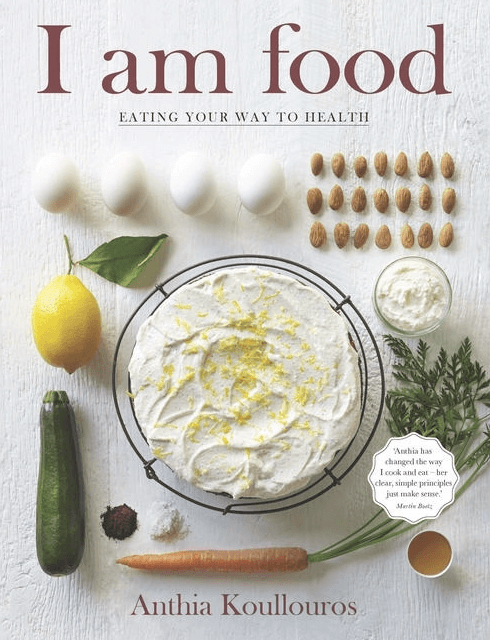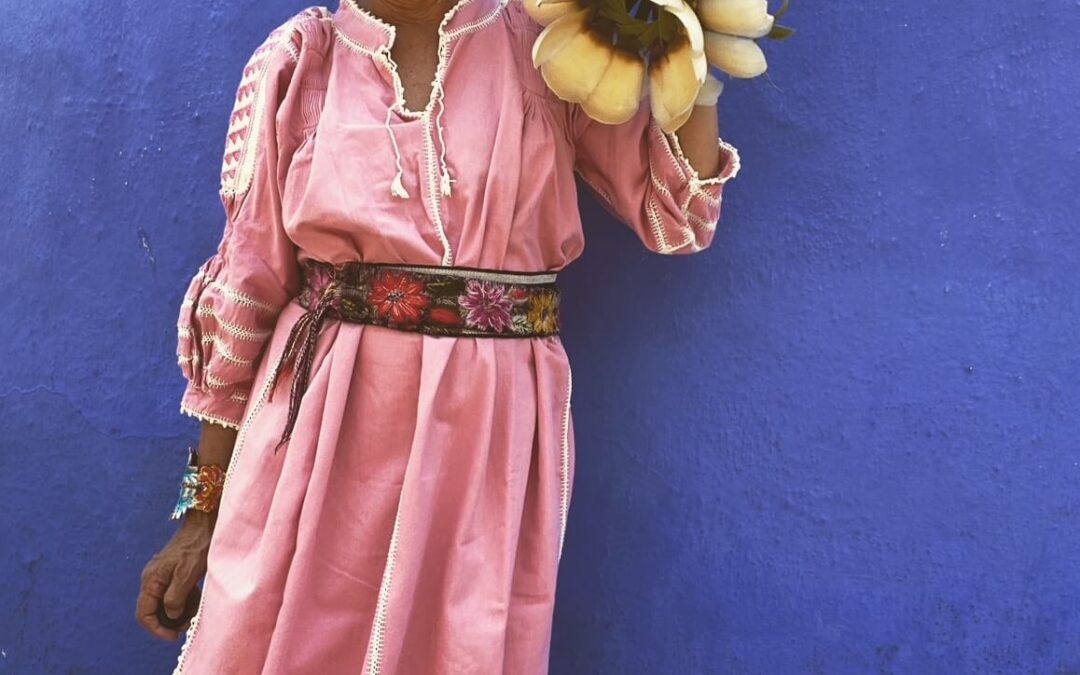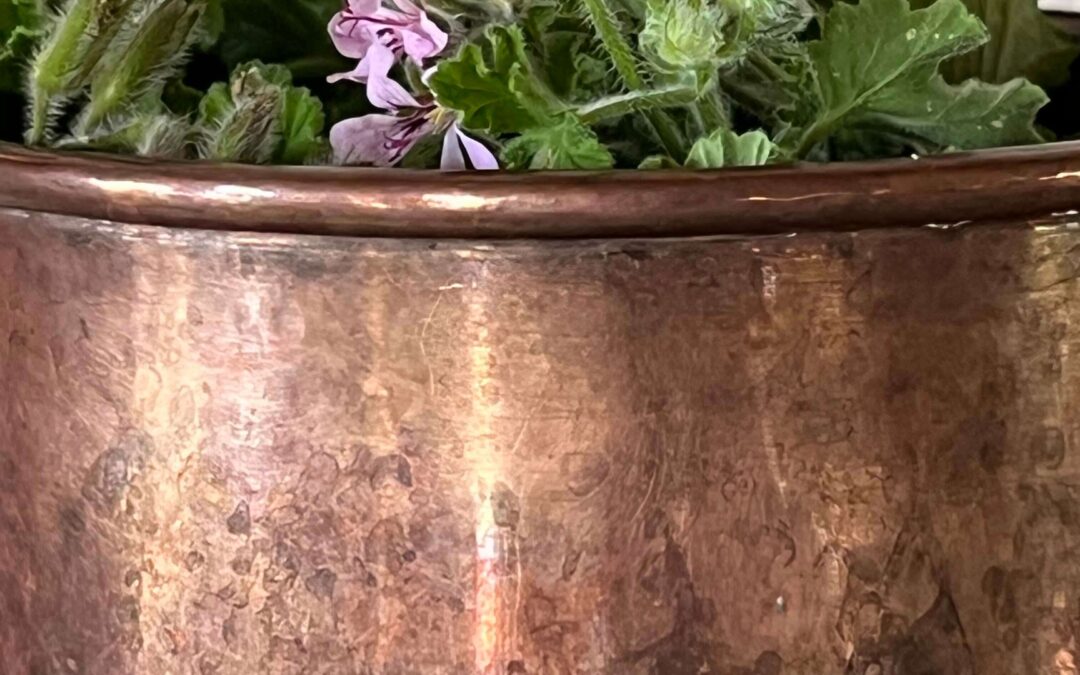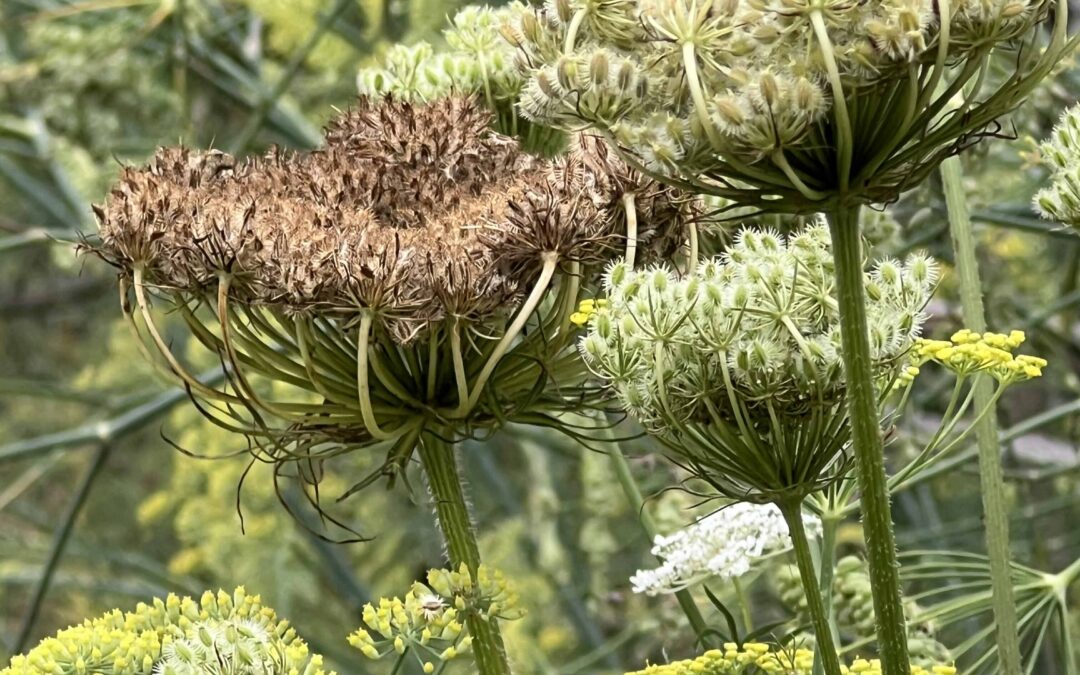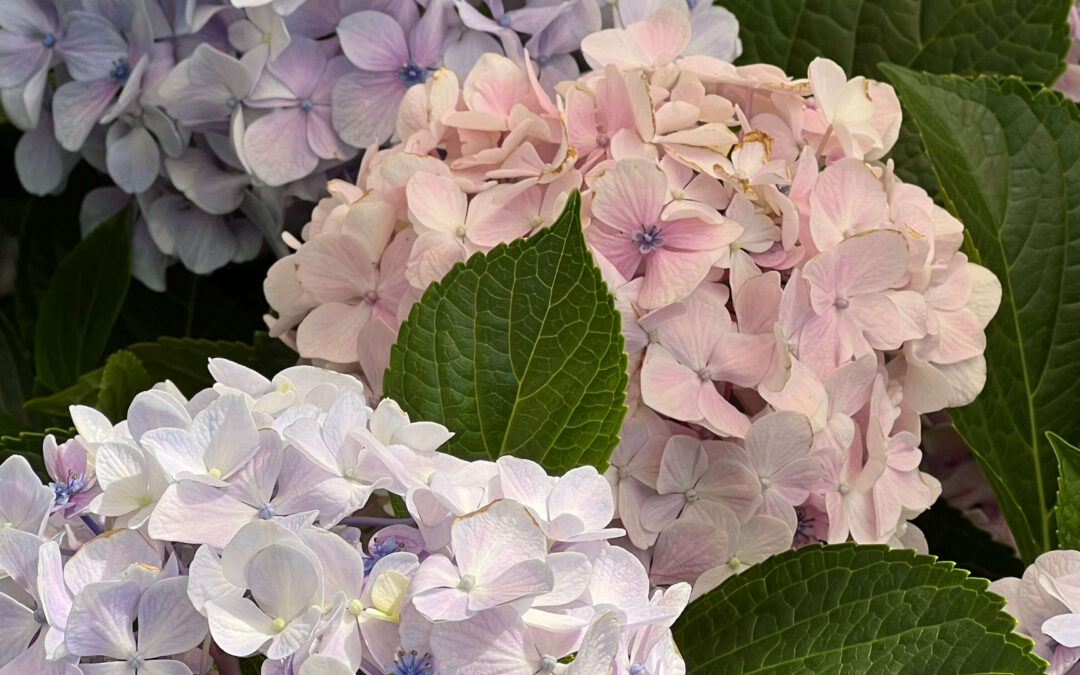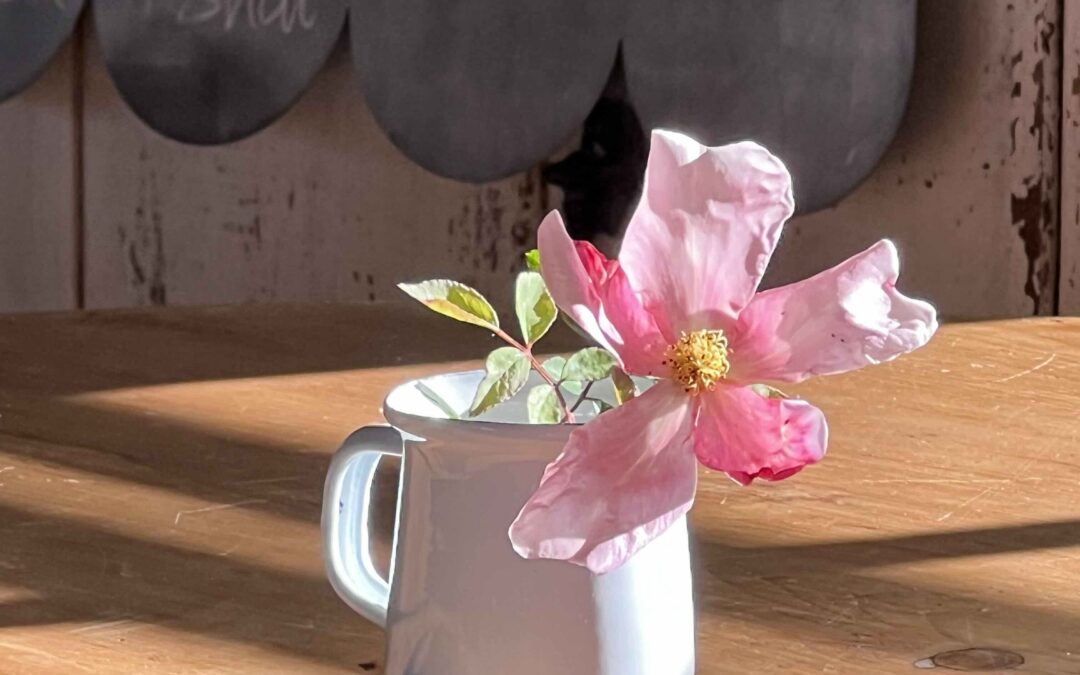
Play Podcast
It’s late September, when we get to walk around the garden together for the first time….
The cusp of a season can be the most nerve-wracking time of all! Part sheer abundance, part total expiry and part sheer panic in the knowledge that all has to be prepared and planted for the season ahead! Timing, timing….don’t delay…..or shall we tarry awhile longer? There’s produce still coming that I don’t want to pull out – after all, it’s been a whole season in the growing! So just keep calm and carry on….
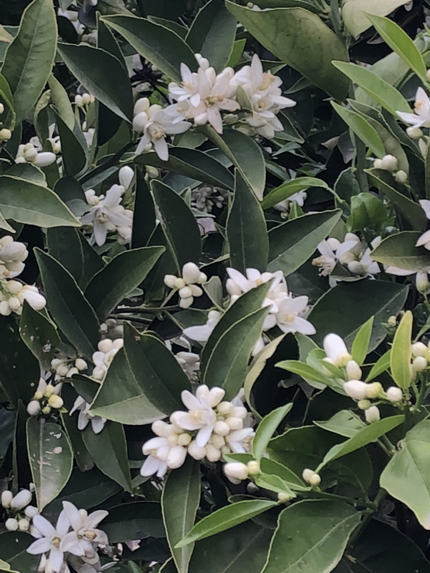
But first, the intoxicating scent of citrus blossom simply engulfs the garden at this time of year, its heady perfume fills in the air…..it packs one helluva punch for a tiny, waxy flower, who’s scent transports me to some hot, Mediterranean clime……
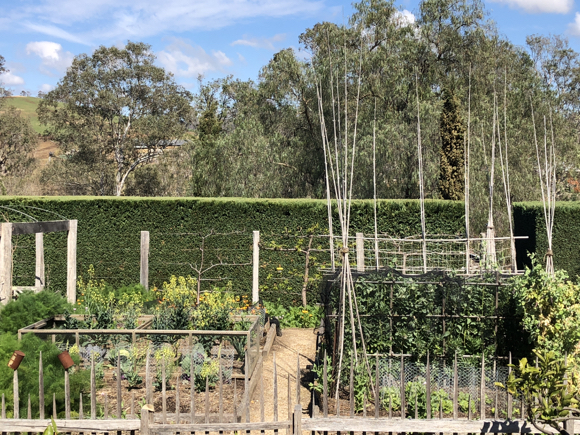
But onto more serious topics! It’s not easy to capture a ‘whole’ image of the traditional beds and to be honest, I’ve never tried before! The chook and citrus enclosure is directly in front of it, so you can’t quite stand far enough back…so this had me standing on top of the wall behind the citrus to try and fit it all in, so I can explain it to you! So while it may not be a favourite, thisis an honest image at the time of recording, which I did on 26 September. But really? I just can’t wait to pull it all out!
Except for the broad beans running down the centre of the legume bed (front right). They’re still pumping out glorious pods, so I’ll start work around them, first pulling out the pea tunnel behind them and the wigwams at the front corners. You can see where the peas on the front left wigwam never got off the ground much this year, but the right wigwam was magnificent ’til the late afternoon arrival of that wretched Sulphur Crested Cockatoo…..
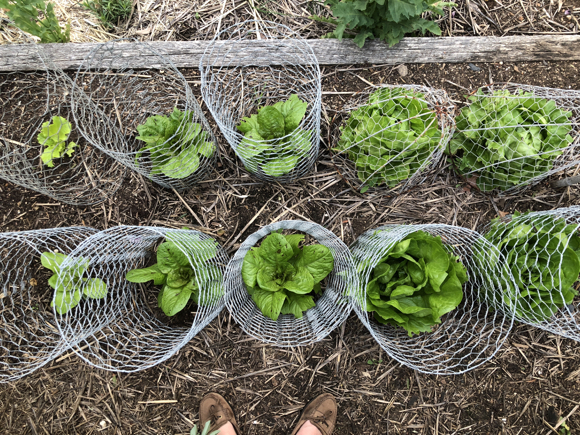
The successional lettuces I mentioned are growing in the wide gap, between those two wigwams at the front of the legume bed. South, to north! So we’re about to eat the ones on the right….(yes I know I should have taken the photo the other way around but balancing on the timber edge didn’t work!).
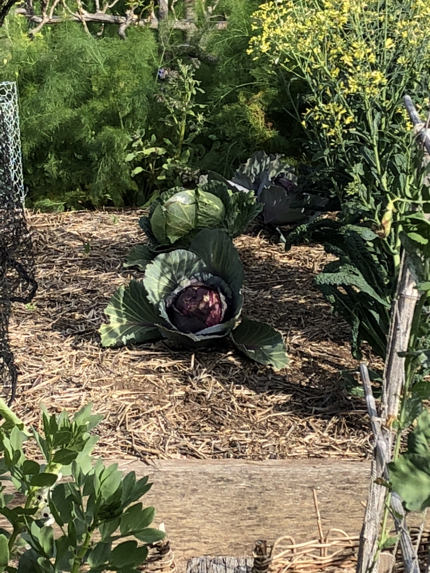
The brassicas, as you can see (front left in the top image), have well and truly had their day, but how I’ve enjoyed the vision of the last row of kohl rabi in their tidy row; their handsome purple spheres coated with a dewey white down, and these last few cabbages at the feet of black Tuscan kale that’s gone to flower, attracting bees by the dozen. So while prepping this bed for the fruiting veg to come is high on my priority list, the bees are important too and anyway, the tomato seedlings on the potting bench are still a bit on the small side, so I don’t feel inclined to panic about its prep quite yet. Since snapping this, I’ve pulled out the crispy apple green Savoy cabbage – (we enjoyed it quickly blanched, drained and tossed in olive oil and pepper to accompany a roast chicken; along with baked carrots, an asparagus each and a handful of peas, all from the garden, of course….scattered with thyme).
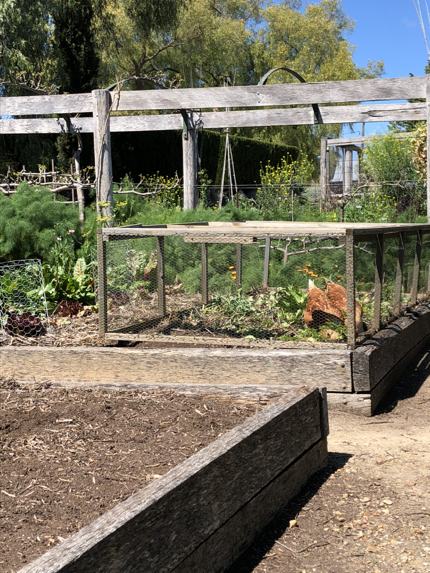
Then behind the brassicas, I got so impatient with the leafy green bed (rear left, top image), that during the course of the long weekend, the chooks went for a little holiday there, in a big wire cage I usually use for the purpose of protecting young brassicas in the early autumn when I first plant them (to protect them from the white cabbage moths which love them). But then it doubles as a portable cage for the chooks at the time of crop rotation. Having them scratch up the ground and pick over any old veg for errant slugs is helpful in the great scheme of things.

Clearly the root veg bed saw a more glorious time mid winter and we’ve eaten well from it, but by now it’s well and truly spent. The yield though, just at the weekend? One magnificent basket full of beetroot, see just after I pulled them below, and a haul of spring onions, who’s roots I salvaged to transplant….I want to see if I can get another crop off them, so they’ve already been planted into the ‘new’ root veg bed for the summer season….we shall see what happens! There’s also the remnants of a row of fabulous carrots and a row of celeriac that I’m just wishing would plump up….oh what a temperamental veg that knobbly root is to grow! But we so love eating it, so I persevere year after year…..

I also had the chooks in here during the long weekend (Larry and I just move the cage about). On a tangent….I actually have a bird phobia that I reckon was caused by a dreadful scene down in the Snowy Mountains when I was very small, when we drove through a huge flock of Galahs. I think birds are beautiful, as long as they don’t come near me and I simply cannot pick up a chook….flighty or otherwise, and admit to going to ridiculous lengths to not be trapped in their pen! Therefore at the time of ‘crop rotation’ I need a good chook handler – fortunately, Larry does a good job with the girls who are always, but always named Cabbage and Rose (and I never have any idea which one is which!).
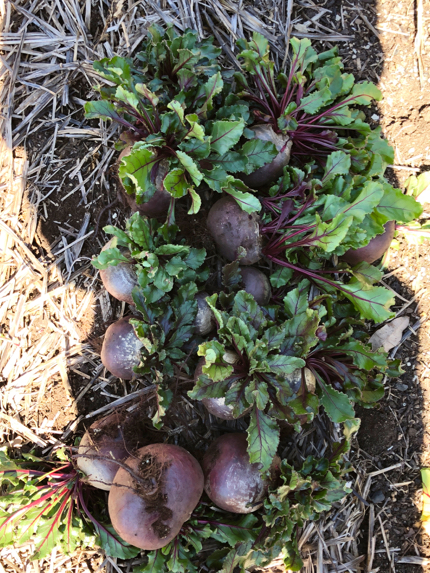
Now because this is going to be the summer legume bed, I’m not too concerned about preparing the middle of it at the moment….my priority is to get the strip at the back for the tunnel, and the two front corners prepared for wigwams, as that is my preferred layout for the summer beans. And rather as I explained with the peas during this episode, there’s no need to actually cover the entire bed with beans! I’ll tell you my plan next time, but right now, there’s no urgent need to pull out the second row of beetroot – it can linger longer, while we eat our way through this batch. Anyone for beetroot soup? Risotto? Or just roasted alongside some chèvre….gosh….I wonder if Pecora Dairy are back in production yet? It might be a bit early in the season for their Bloomy….note to self – send them a message because that combination is so totally scrumptious and could be on the lunch menu here for the upcoming ‘Gardens on the Edge’ book launch!
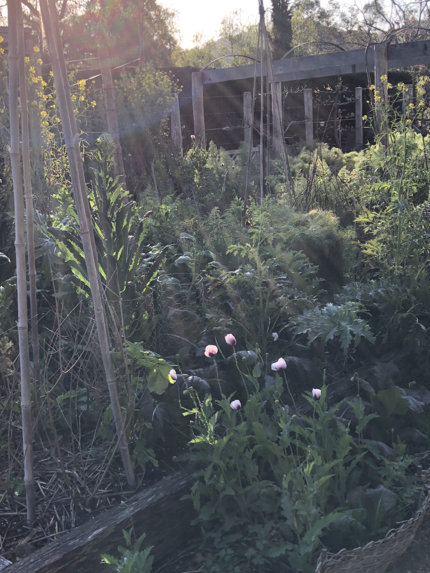
The guild beds, on the other hand, are looking pretty as a picture….the kind of garden that’s all I ever really wanted….one of billowing, simple flowers, of contrasting foliage shimmering in the late afternoon light. A gentle garden, one that makes you sigh…..the traditional side looks positively harsh by comparison.

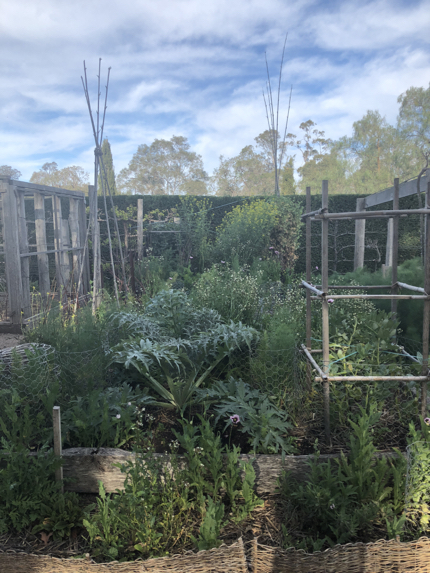
But just because they look all soft and romantic, don’t be fooled….they are filled with produce that we’re eating our way through! I mentioned in the introduction, that I use the guild beds for a different ‘style’ of gardening altogether. And if you’ll just bear with me through the coming episodes, I reckon you’ll begin to get the hang of it. The planting on this side is all ‘loose’ and while I plan much of it, I also allow plants to self-sow at will. I believe a plant that chooses a place to grow of its own accord, is bound to be happy. So to a certain extent, I let the plants on this side have their wicked way.
If you plan to garden in this manner though….you do need to get to know your seed and seedlings. Because here’s the thing…it’s very easy to weed out what may be a happy combination! Look at this:
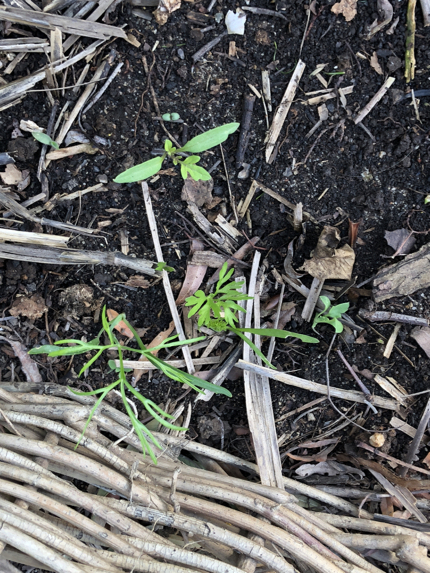
I wonder if you can spot the difference? I know I certainly wouldn’t have had a clue at the beginning of my gardening journey. But these days I know….front left is fennel, to its right is a carrot, to the right of that a poppy and behind, a tomato! Am I going to leave them all there? No….but I will just for the moment….I’ll let them get a wee bit bigger, then I’ll have to choose. To be honest, it’s a silly spot they’ve got themselves into, but we shall see….
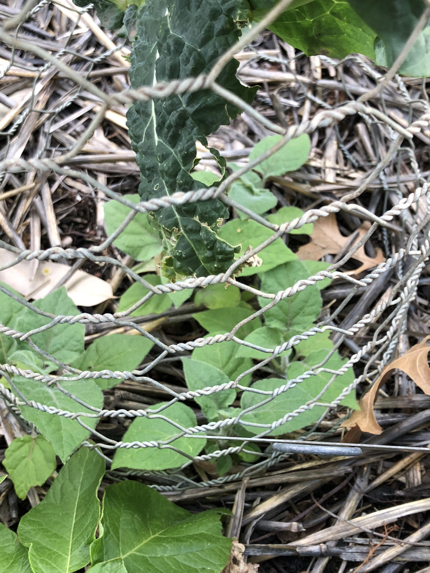
It was a near miss, a few months ago too, when these Cape Gooseberries appeared out of nowhere….they look a bit more substantial now, but at the beginning they looked very weedy indeed and I was about to whip them out when a little flash crossed my mind….hadn’t Cape Gooseberries been here two summers ago? Oh my goodness, yes….precious, hands off, don’t touch! Annoyingly, the plants themselves do become weedy and not very attractive, but oh their fruit….have a quick squizz back at instagram the last time they came to visit. Their seed lies dormant through a whole year, so they are literally buried treasure…then their papery lanterns encase the tangiest, tiny golden fruit from late summer (that’s if the 28 spotted ladybird doesn’t decimate the plants in the meantime), so we’ll have to wait ’til then, when I’ll let you how I use them!
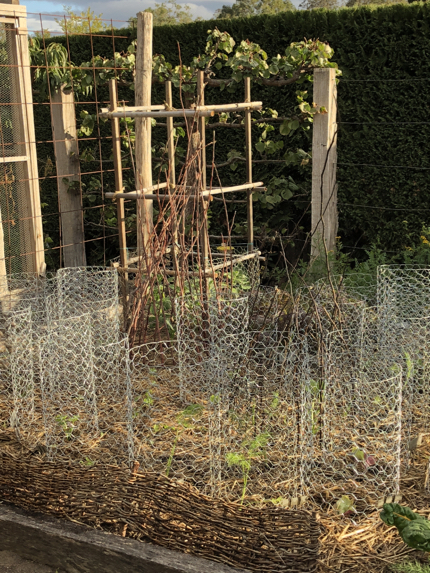
But as usual….I digress…..sorry! There is much I want to tell you here. I know I spoke during the episode about my new love affair with wire! Well….I’ve always loved wire, but I’m taking the whole thing to a new level! You see I sometimes think that gardening here is rather like being at war…our wildlife is not timid, or gentle. It’s brash, rude and cocky….wonder where that word came from? From the Sulphur Crested Cockatoos that screech, dive-bomb and destroy, to the gloriously coloured Parrot family and onto the Bowerbirds, who I sometimes think actually cause more havoc than the others put together, to the inevitable rats and mice, rabbits and possums….but that visiting kangaroo is another thing altogether! I know it’s just one (to all you lovely country folk who have mobs of them and I shouldn’t complain). I see it sometimes down in the paddock, but honestly it did give me the fright of my life a few weeks ago when I was watering one morning….mid-morning on a lazy weekend, so it’s not like it was dusk or dawn…and I turned around at a sound that I expected to be Hector rummaging around, when I came eye to eye with Mr Roo! Nothing but the fence between him and me. Good grief! He’s very big close up and I certainly wouldn’t want to get in his way!
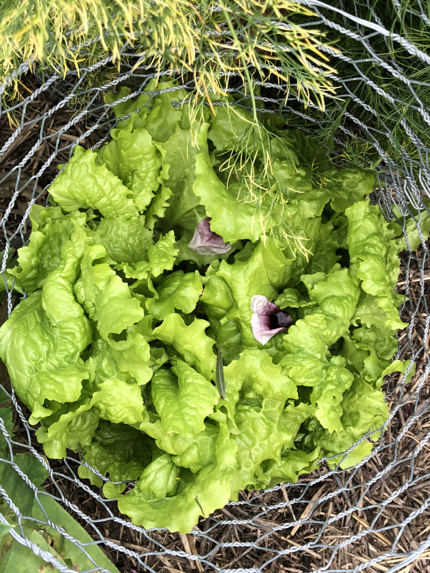
So back to the wire. While it’s not completely fool-proof, certainly this has made the most enormous difference – even to the damage Mr Roo was causing before I put in all the cylinders! And….it’s caused me to space out the plants, just so….and they’ve grown particularly well throughout the winter months. Of course you may think me mad, but I’ve always placed a high value on repetition, from a design perspective, and these simple wire cylinders have added a new dimension to the garden.
The top image was taken in the autumn, when I first placed them over tiny seedlings, while now….each cylinder has filled with its designated plant and each of the three beds is awash with lettuces and fennel, kale and celery, globe artichokes and potatoes, carrots and coloured chard, all interspersed with clouds of rocket and red elk mustard in flower, and poppies. And WE, rather than the wildlife, are eating well!
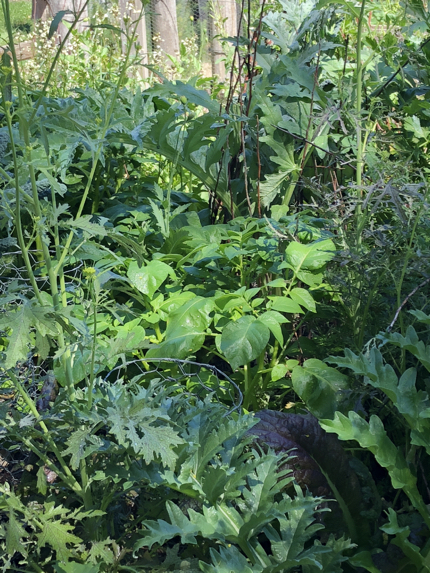
You can hardly even see the wire cylinders now that the veg have reached their full size. I know I mentioned I’d pop up an image of the loose baskets I make when I sow seed in these beds, but I’m going to leave it ’til I actually do that, coming up soon….I’m not quite up to that stage in the season yet, so it’s on my agenda and I won’t forget!
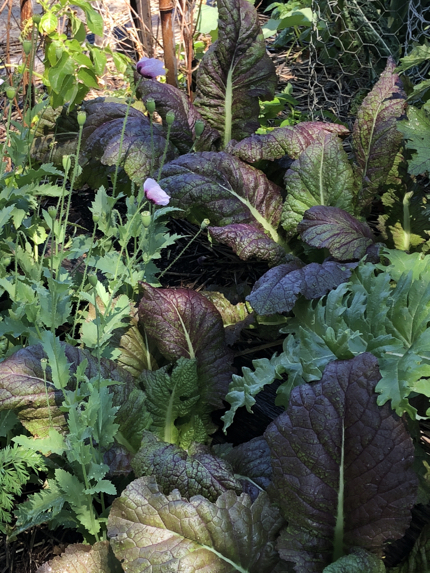
The companion beds and actual beds are almost indistinguishable from each other in places.

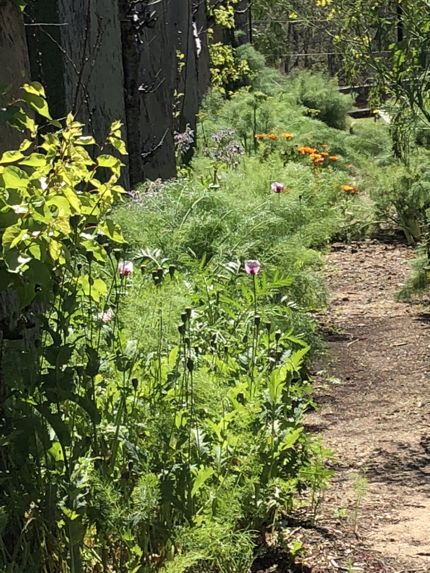
And all the way along the back, under the espaliered fruit trees, spring foliage and flowers of companion plants spill out onto the path.
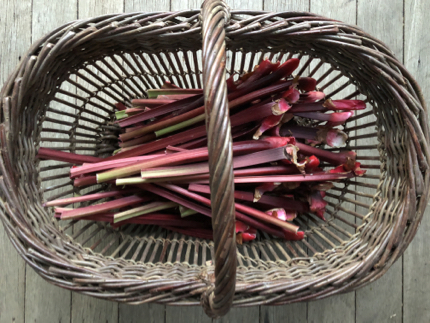
Down in the drying green, with the overflow produce, there are plenty of stalks of spring rhubarb…
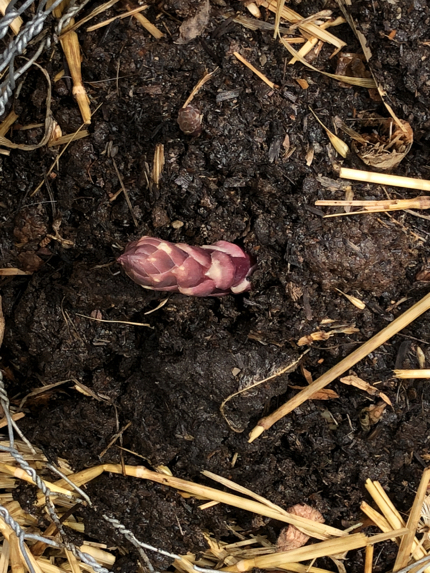
The first asparagus are pushing their way through the earth….thick and plump or pencil thin – home-grown asparagus come in all different shapes and sizes and when cooking, you just need to pop the fat ones in first!
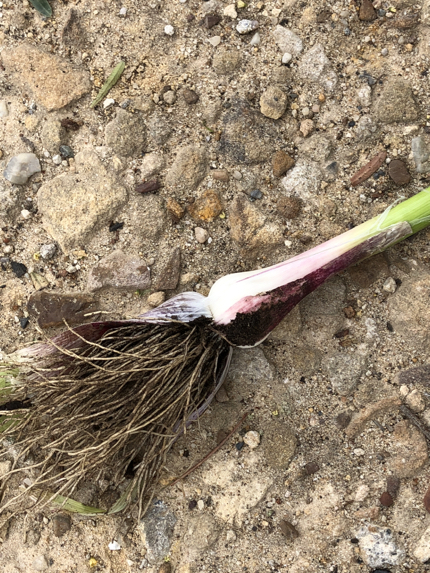
I’m checking the garlic once a week at the moment….or when I need a hit of fresh garlic in our dinner! It’s growing on well, but the ‘cloves’ are yet to form, so it’ll be in the ground for another few weeks yet.
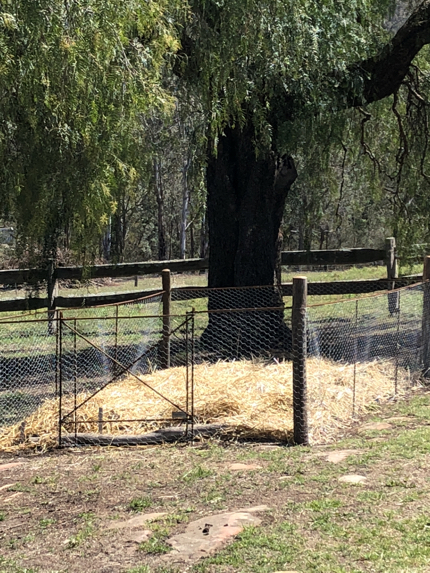
Then with the likelihood of another frost behind us, the main crop potatoes went in last week. I know I call this area ‘the pumpkin paddock’ but as with all the beds, I keep all the veg on the move, including the pumpkins but especially the potatoes. And rather as I alluded to during this episode for elsewhere in the garden, I really want to improve the soil in this particular spot (though I’m sure nothing will stop all the rocks from rising to the surface….one of us seems to dig out a wheelbarrow-full every year!).
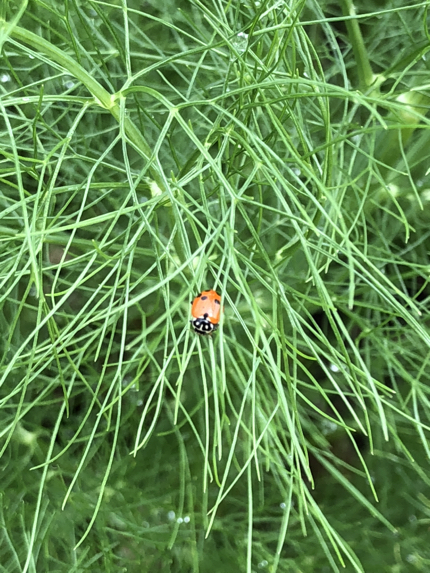
This is one of the darling little ladybirds that arrived a couple of weeks ago…when the frosts eased. These are good ones and to be encouraged like crazy. I’ll let you know when the undesirable 28-spotted one arrives in town!
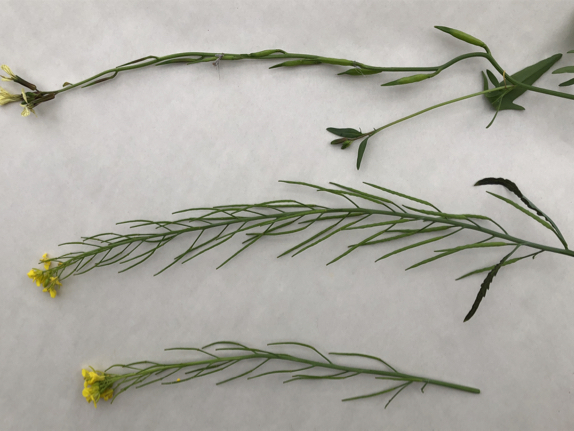
Then just for a moment I’d like to raise the topic of seed, because seed is an integral part of the kitchen gardening sequence, and particularly relevant to the way I garden in the ‘guild’ beds.
I imagine you understand by now, that I seek to create a hazy, romantic vision in the guild beds…and much of that aesthetic is achieved by allowing a certain number of the veg to grow through their full cycle, to fully mature and to flower. In effect, this creates the closest thing I can achieve to an almost meadow-like garden (depending on my choice of plants)….the kind I love to see. But there is also method in my madness…because in allowing veg to run to flower, it means I can eventually collect their seed, and begin the whole natural cycle all over again.
One of my regular correspondents is particularly interested in seed, and to be honest, aside from the compost, it’s the topic that gets the most ‘ahhhhh’ moments at any workshop here – whether kitchen gardening, cooking or even if I’m just showing garden visitors. If you look at the image above, the top stem is of rocket, the two lower ones of the mustard Red Elk. You can see to the left of the image where the stems are still flowering….then immediately behind the flowers, they’ve left behind something that looks almost like a fine stick…but follow those ‘sticks’ towards the right of the stem….which is where the first flowers appeared, and you will see these first fine ‘sticks’ have begun to swell…as the seeds inside slowly develop, the ‘sticks’ are becoming seed pods, although they still have some way to go. I find this to be endlessly fascinating and I’ll look forward to showing you the pods’ progress next month!
But one more thing on this topic…..in allowing these plants to go to seed, they have in turn, become excellent ‘companion’ plants….encouraging the bees, ladybirds and hoverflies to the garden, so are contributing towards a complete eco-system. Plusses on every front I think.
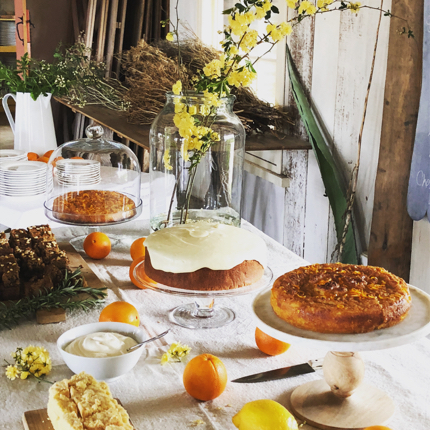
Then I know I promised an image of the cakes that were a veritable celebration of citrus that I baked for the afternoon tea event here for the Camden Garden Festival a couple of weeks ago! Most of the recipes are in The House and Garden at Glenmore and all are easy peasy…or I wouldn’t bother with them. And they are all totally scrumptious! We still have citrus fruit on the trees….we’ve almost finished the Navel oranges and are about to begin eating the Valencias, whilst the Meyer lemons are long gone and we’re working our way slowly now through the Lisbons.

And here’s Hector, looking decidedly nonplussed. Can you just stop with the gardening now….please? Mind you he’s not much impressed with the amount of time I spend at my computer either!
Just one more thing that I want to say at this early stage of the episodes…..none of this is rocket science! But oh how I believe in growing our own produce if we can…..and please don’t be put off by the size of the garden here….along the way, you will find plant combinations and little tips that will allow you to grow even something in the smallest space. And you know….if I can do it, then anyone can!
Til next time! When there will be much ado about compost, amongst other topics….

| Going, going…… | all the brassica family, so broccoli, cabbage, kale and cauliflower, kohl rabi and brussels sprouts (OK so I gave up even trying to grow them…which is tragic because we love them, but we just don’t get cold enough for long enough here – boohoo). |
| Eating…. | peas, broad beans, fennel, parsnip, beetroot, carrot, celeriac, celery, lettuce, coloured chard, early leeks, early asparagus, first rhubarb, and the last of the cabbage, kohl rabi, kale and side shoots of broccoli. Parsley, thyme, we always have rosemary as it’s dotted all around the garden, mint, new shoots of sage and chives and the very first early lovage leaves. |
| Sowing seed of…. | beans, corn, cucumber, zucchini, pumpkin, carrot, beetroot. The main crop potatoes went in last week. |
| Planting seedlings of… | tomatoes (well, just as soon as they’ve grown on a bit more – they’re on the bench from when I sowed seed in mid-winter and are being a bit slow this year), aubergine, capsicum. |
It’s possible I’ve forgotten something but that surely must be the bulk of it!
pps Of the cakes I mentioned, all but Joyce’s Lemon Cake (Damien Pignolet’s cookbook ‘French’) and Margie Agostini’s Orange cake (who’s recipe I kept from the SMH years ago) are in The House and Garden at Glenmore. Aaron Bertelson’s lemon-infused shortbread is from The Great Dixter Cookbook. And the Spring Green’s Pie that Belinda Jeffery included in her workshop here last year is a beauty…..I made it again for the workshop here at the weekend, because once again, it’s that time of the season! Belinda tells me you can find the recipe in her 10th anniversary edition of ‘Mix & Bake’.

